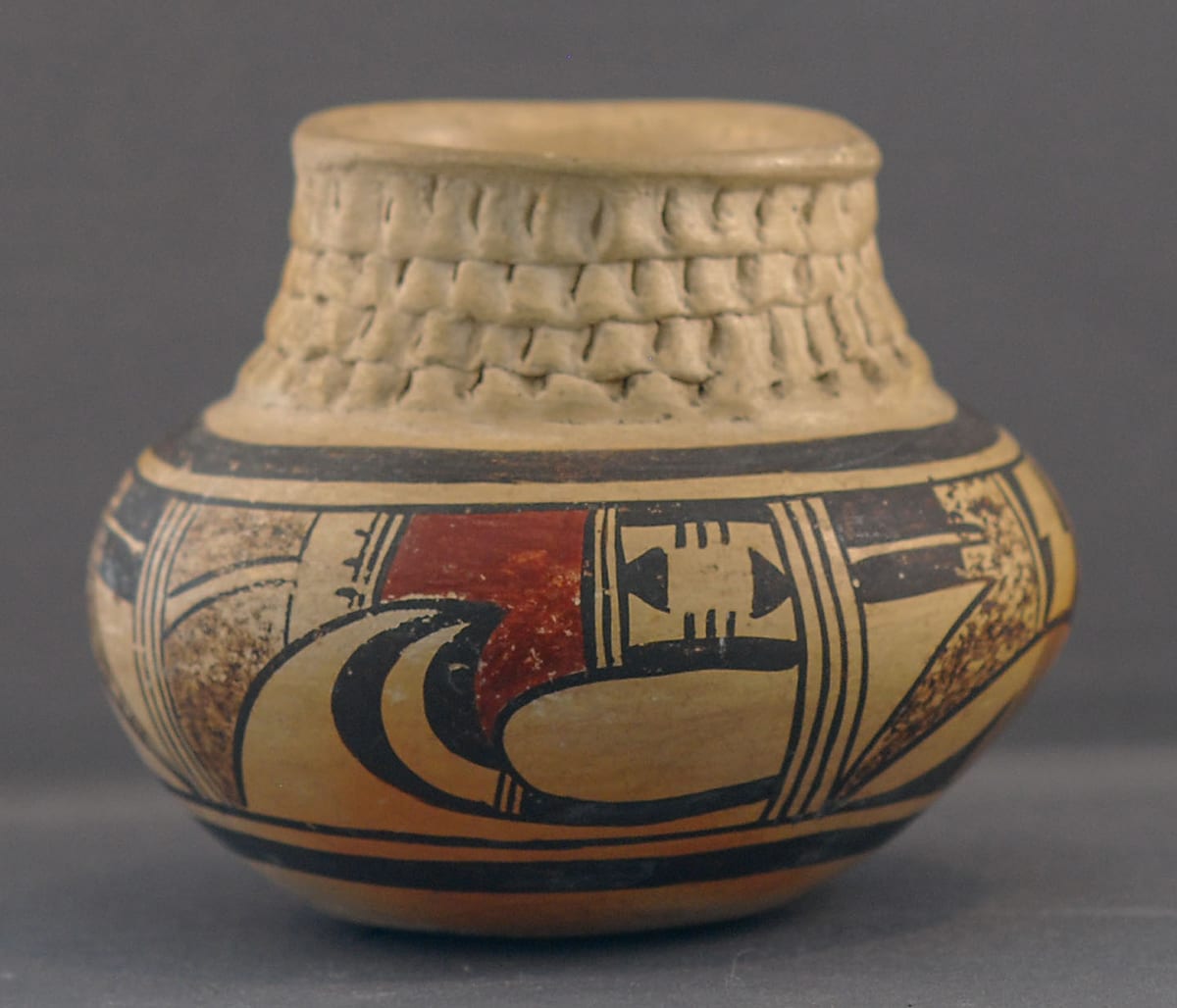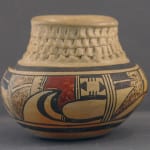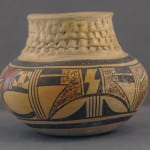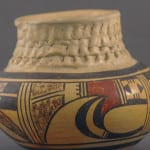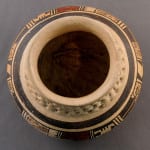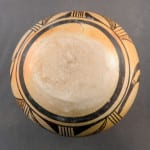Pueblo pottery is made by first pressing clay into a shallow dish-shaped base known as a puki in the Tewa language. Additional coils of clay are then laid on the edge of the puki and built up to form the sides of the vessel. Walter Hough (1915:78) describes Nampeyo beginning a pot in this manner (although he refers to the puki with the Hopi term tabipi). On jar 2012-14, the base formed in the puki is exceptionally thick and heavy. The bottom inside of the pot (the top of the base) is unfinished and roughly merges with the relatively thin, smooth vessel walls. It’s a curious dichotomy.
Barbara Kramer writes:
“Documentation is lacking, but evidence enforces the belief that (Nampeyo) began to make tactile decorations and shapes. A photograph taken by Emry Kopta around 1920 is the earliest to show a jar with a corrugated neck, several other corrugated jars can be attributed to this period” (1966:123, 153).
Kramer then reprints the Kopta photograph, commenting that “Nampeyo looks older (than 1920) in this undated photo that may have been taken shortly before Kopta left Hopi in 1922. Because of diminished eyesight, Nampeyo was adding tactile decoration to her vessels during this period… As her eyesight diminished, the potter expressed her creativity with tactile forms” (1996:123, 153).
Kramer reproduces color photographs of two other corrugated pots by Nampeyo (1996: plates 13 and 15, pgs 153-154). The first of these jars is signed “Nampeyo” on the bottom. (Also see Blairs 1999: fig 3.16 following page 172). After 1930, vessels shaped by Nampeyo and painted by a daughter were often signed “Nampeyo.” (See “Appendix E” for a detailed discussion of signed Nampeyo pots.)
The second of the two pots illustrated by Kramer is particularly interesting because the interior of the pot seems to be roughly finished and a section of painting (presumably by a substantially blind Nampeyo) is crudely painted while the bulk of the painting (presumably by a daughter) is well done. It is unsigned.
The painting on jar 2012-14 is especially well done and, to my eye, looks like the work of Fannie. The designs include a range of fairly typical avian and linear designs, including a triangle motif reminiscent of the design of Nampeyo’s large individual canteen (2009-10). However, there is none of the structure of design strategies that I expect to see on a pot painted by Nampeyo. (See “Appendix B.”) The red is somewhat blotchy, as would have been typical before 1930 when the Museum of Northern Arizona successfully insisted that Hopi pots entered into the museum exhibition have more uniform color (Allen 1984:67-69).
The attribution of an unsigned pot to Nampeyo is always problematic (Cusick:1984). A second corrugated pot in the collection (2019-18) is about the same size and shape as the pot discussed here. While the elements of design are different, both pots seem to have been painted by the same hand with the design elements simply following one another, without any of the internal logic of design that characterizes the work of “the Old Lady.” Pot 2019-18, however, is signed “NAMPEYuo” in block letters that look like Fannie’s handwriting and uses the capital “E” that we expect in her signature. (See Appendix E for that logic.) My confidence in the attribution of pot 2019-18 as “formed by Nampeyo and painted by Fannie” bolsters my belief that the same pair formed and painted jar 2012-14.

